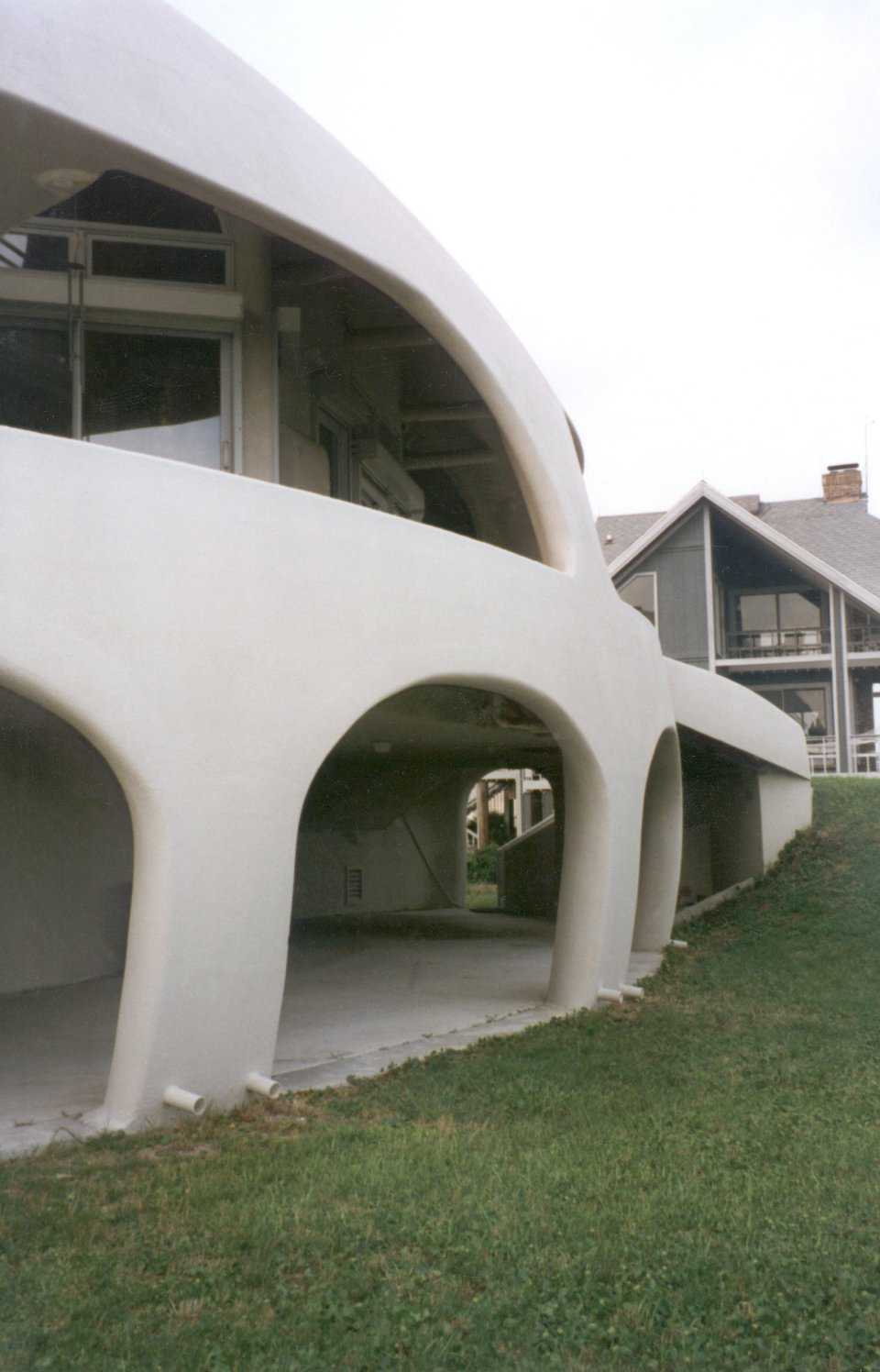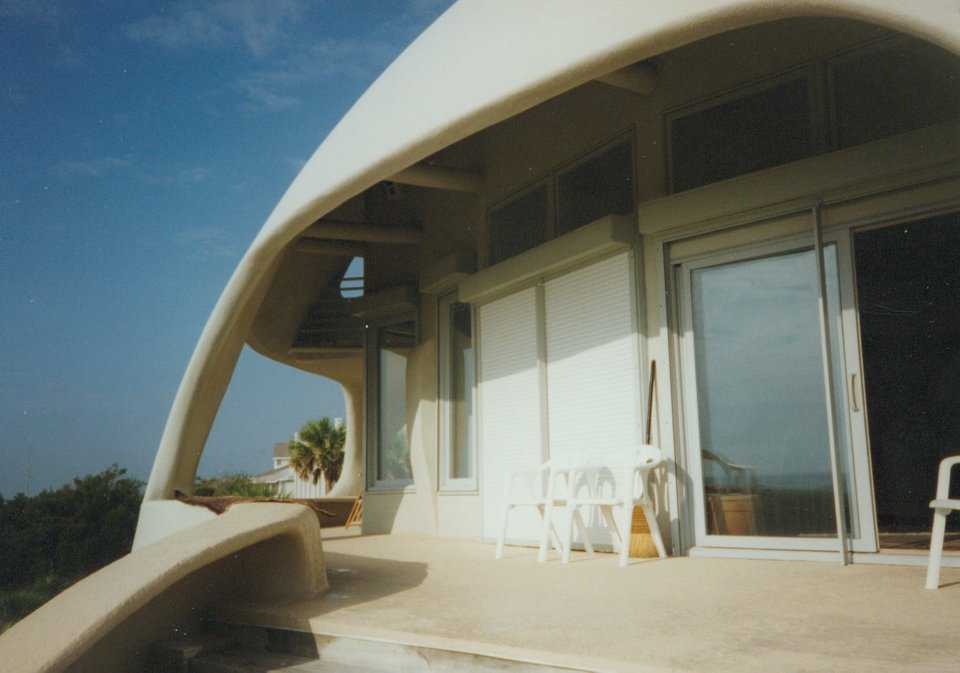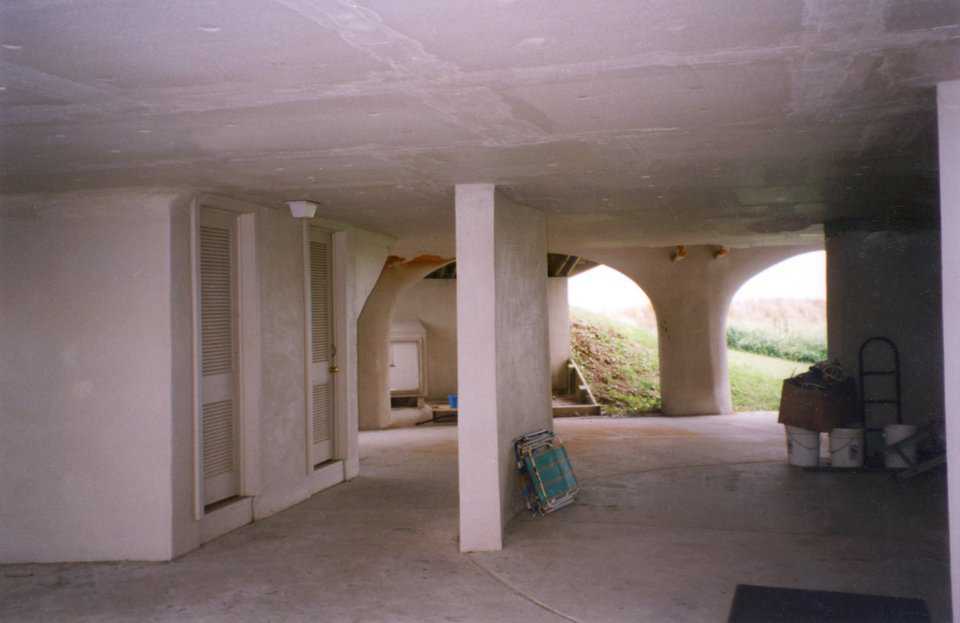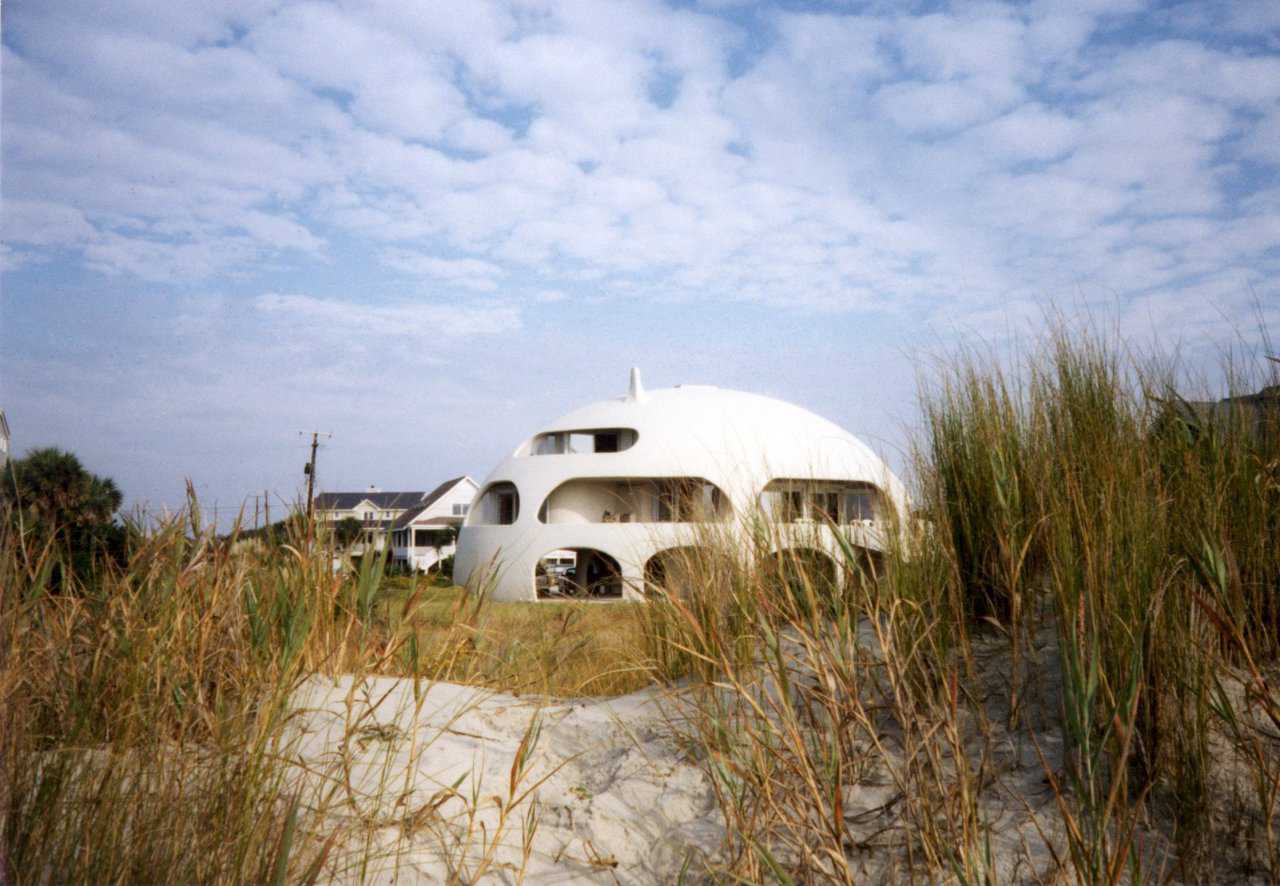The challenge
Building a beach front home offers a few extra challenges such as wind, water, erosion, flying debris and corrosion. A Monolithic Dome home successfully meets each of these challenges.
Hurricane Winds
A Category 5 hurricane, like Hurricane Andrew, is as bad as a hurricane gets. Fortunately, only a few ever reach a Category 5 intensity with sustained wind speeds up to 150 miles per hour. Such a wind pushes with a force of 100 pounds per square foot (psf). That’s a lot of pressure!
Most conventional homes are designed for 50 psf — about equal to the force of a 100 mph wind, but not 150 mph. Many conventional structures cannot withstand the internal pressure from a hurricane. For example, if a garage door pops open or a window pops out, air pressure coming into the structure can explode it.
A Monolithic Dome home easily withstands winds of 150 mph, so that will not happen with a Monolithic Dome – even if all the doors and windows are left open or taken down. Obviously, it’s easier on the occupant if windows stay in place. Consequently, Monolithic suggests using hurricane-rated windows and/or shutters that pull down over the windows to protect them.
Its ability to resist wind is a by-product of the Monolithic Dome’s shape that passes the wind around the home, thus eliminating any serious pressure build up.
The strength of the Dome exceeds that of the wind. So, the hurricane wind by itself means nothing to a Monolithic Dome.
Tornado Winds
Unfortunately, hurricanes often have twisters or tornadoes within or around them. A tornado is much more destructive and can have wind speeds up to 300 mph, exerting a force up to 400 psf. Most conventional buildings cannot withstand a force of 400 psf.
Fortunately, if you can call it fortunate, tornadoes usually do not cover a broad front. Compared to hurricanes, tornadoes generally cover a small area. However, if that small area includes your home, the much greater pressure can cause far greater damage.
When a tornado hits a home, several things can happen: The wind can exert a pressure up to 400 psf. That’s twice the pressure a loaded semi-truck and trailer exert sitting on the ground. That much pressure can push a building sideways and even topple it!
As a tornado travels over a structure, a depressurization occurs. That depressurization often sucks the roof off the house.
Monolithic Dome homes can withstand 400 psf pressure and severe depressurization. Nevertheless, windows and doors should be protected. The dome can easily survive air pressure that might get in, but unprotected windows might result in flying glass. To avoid injury, people sheltering in a Monolithic Dome during a hurricane or tornado should stay behind the concrete portion of the dome – never in front of glass.
How do we know this?
We often build Monolithic Domes for use underground — some at depths of 30 feet. More than 2,000 psf of force can push against a buried dome. And unlike a tornado where the shape of the dome reduces the overall stress of the wind pressure, the buried dome is always under full load. So if a dome can withstand a constant 2,000 psf force, it can easily withstand 400 psf.
Moving Water
Hurricanes bring water as well as winds. If the location of the dome is such that water can wash up against it, great care must be taken in its design and construction. While water surge will not hurt the dome, it can loosen its foundation by washing away the ground under the dome.
In September 2004, Hurricane Ivan hit Dome of a Home in Pensacola Beach, Florida and caused enormous beach erosion. Water surge wiped out all of the protective dunes between the dome and the shoreline.
Had Dome of a Home not been set on pilings, the onslaught of water would have moved it. In a large area, water actually excavated the ground out from under the dome. But because Dome of a Home was set on a series of pilings that were driven 17 feet into the earth, it held its position.
Erosion and Debris
A conventional home located where massive erosion occurs probably can be protected only with a substantial seawall, built to contain the erosion.
Even when massive erosion is not a problem, the destructive force of moving water can threaten a beach front home. Water has more mass than wind; therefore, water pushes with more force than wind. If storm surge is a possibility, the home must be able to resist the combined push of wind and water and flying debris. That flying debris could include everything from shingles to automobiles.
Monolithic Domes are Survivors!
The very process used in constructing a Monolithic Dome beach front home makes it a moving-water survivor: We begin with pilings driven in a circle under the perimeter of a Monolithic Dome. We connect these pilings with a circular concrete pile cap that becomes the foundation ring beam.
This means that a circle of concrete is built attached to the top of each of the pilings. The pilings act as teeth in the ground and keep the building from sliding. The pile cap attaches the dome to the teeth.
From the pile cap, we run rebar into the floor; this prevents moving water from lifting or moving the floor. We then build the dome on top of this pile cap/foundation, adding hundreds of tons of weight to hold the pile cap/foundation down. Thus, the weight of the dome setting on the pile cap/foundation, and the pile cap attached to the teeth keep the entire structure from traveling. So the real key is the weight of the Monolithic Dome, plus its strength and ability to stay in one piece during high winds and storm surge.
The lower section of a Monolithic Dome beach front home has very large openings. Storm surge flows through these openings and under the main part of the house, leaving it undamaged. These openings can be closed with screens or break-a-way walls; the walls will breakaway from the building during heavy storm surge. Obviously, it’s better to lose a relatively inexpensive breakaway wall or replaceable screen than to lose the structure.
In normal weather conditions, this ground floor of a Monolithic Dome provides excellent automobile parking and storage space. However, during times of storm surge these vehicles should be moved to higher ground or they might get flooded.
The beach front Monolithic Dome is built with its main floor suspended from the dome. We recommend the level of the floor be above the highest expected water level. This has huge advantages: It eliminates posts that can be knocked out by storm surge from underneath the floor. It also adds more weight to the dome perimeter, hence pile cap, that helps hold it in place.
For beach front housing, it’s generally better to build a single Dome and concentrate the weight to resist any movement from storm surge. This is particularly true in areas where storm surge can hit the building. In other areas, it absolutely doesn’t matter and you can build whatever you want.
Windows and doors of a beach front property should have shutters. Roll-down shutters generally are adequate. Monolithic Dome designs include those. Obviously, major debris can destroy shutters and windows — but never the Monolithic Dome.
Corrosion
Monolithic Domes use an Airform and urethane foam immune to corrosion. The rebar (reinforcement steel) properly placed is protected from corrosion by the concrete. Properly mixed concrete is very resilient to corrosion, and proper coatings to the exposed concrete can also add protection.
What about a tsunami?
I recently had a representative from the National Oceanic and Atmospheric Administration (NOAA), an agency of the US Department of Commerce that conducts environmental research, contact me. The NOAA wanted to know if a Monolithic Dome could be built that would survive a 100 foot tsunami.
My answer was an absolute Yes with this provision: a rock that I could anchor the dome to.
The rock would have to prevent the uplift created by the water flowing over the dome to pop the dome to the water’s surface. Water over the top of a Monolithic Dome turns that dome into an upside-down boat that will struggle to pop to the surface. So for this situation, the dome must be anchored. But if the water gets inside the dome, the pressure is equalized, and the water’s lifting capacity is lost.
The Monolithic Dome is ideal for beach front property. It cannot be burned or blown away and its life expectancy is measured in centuries.
Note: We first presented this information in our Winter 1998 Roundup and updated it in March 2009.

Foundation — The dome sits on a foundation attached to pilings buried deep into the ground. All concrete and steel reinforcement are interconnected. Notice the drainage pipes embedded in the dome to drain water from the deck above.

Storm shutters — Powered storm shutters, designed to withstand a 2 × 4 at 100 miles per hour, protect the windows and the occupants inside. During a power failure, all the shutters may be manually closed in a short period of time.

Garage — The bottom floor is completely open and the upper floors are actually suspended from the dome. During severe weather, storm surge can fill the entire garage without damage to the living spaces above. Repairs costs are limited to only the minor walls in the garage.
